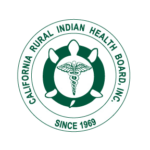
Emergency Preparedness
Emergency preparedness requires attention not just to specific types of hazards but also to steps that increase preparedness for any type of hazard whether it be a fire, earthquake, pandemic outbreak, etc. The resources below are intended to help Tribal health programs take an all-hazards approach to preparedness.
Resource List
- CDC Emergency Preparedness Page: This site is intended to increase the nation’s ability to prepare for and respond to public health emergencies by addressing all hazards and posting update information and resources for recent incidents and outbreaks. To learn more about CDC Emergency Preparedness Page, click here.
- World Health Organization (WHO): is the directing and coordinating authority for health within the United Nations system. It is responsible for providing leadership on global health matters, shaping the health research agenda, setting norms and standards, articulating evidence-based policy options, providing technical support to countries and monitoring and assessing health trends. To learn more about World Health Organization (WHO), click here.
- Native American Alliance for Emergency Preparedness: The California Area Office of the Indian Health Service (IHS) and the California Indian Health Program (IHP), in collaboration with the Native American Alliance for Emergency Preparedness (NAAEP) seek to increase capacity across Indian Country by hosting a site with online educational materials including the NAAEP curriculum, didactic tutorials, case-based animated tutorials, disaster plan templates, and relevant additional resources to provide access to critical information related to preparedness and response for both California area and a greater geographic region of Indian clinics. To learn more about Native American Alliance for Emergency Preparedness, click here.
- The California Health Alert Network (CAHAN) is the State of California’s web-based information and communications system available on a 24/7/365 basis for distribution of health alerts, dissemination of prevention guidelines, coordination of disease investigation efforts, preparedness planning, and other initiatives that strengthen state and local preparedness. CAHAN participants have the ability to receive alerts and notifications via alphanumeric pager, e-mail, fax, and phone (cellular and landline). To learn more about California Health Alert Network, click here.
- California Department of Public Health: The California Department of Public Health’s website features current guidance, news releases, alerts, and data relating to the COVID-19 outbreak in California as well as information regarding COVID-19 testing. To learn more about California Department of Public Health, click here.
- Emergency Management Institute FEMA On-Line Courses: The Emergency Management Institute (EMI) offers self-paced courses designed for people who have emergency management responsibilities and the general public. All are offered free-of-charge to those who qualify for enrollment. FEMA’s Independent Study Program offers courses that support the nine mission areas identified by the National Preparedness Goal: incident management; operational planning; disaster logistics; emergency communications; service to disaster victims; continuity programs; public disaster communications; integrated preparedness; and hazard mitigation. To learn more about the Emergency Management Institute FEMA On-Line Courses, click here.
For more information, contact:
Kathleen Jack
Deputy Director, Research and Public Health Department
kjack@crihb.org
916-929-9761, ext. 1502

